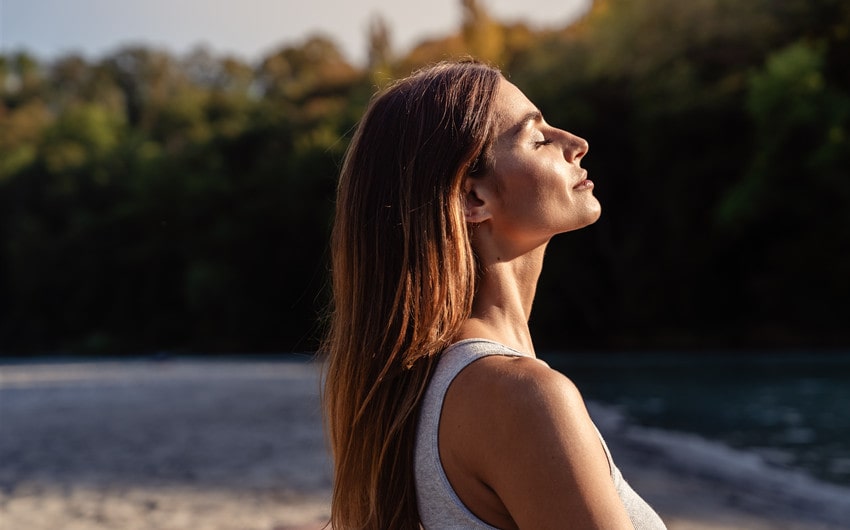The Kind of Peace You Can Give Yourself Is the Most Powerful Kind of All
You’re constantly giving pieces of yourself to others—your time, your energy, your thoughts. But what about peace? Have you ever wondered what it feels like to give yourself the kind of peace that doesn’t depend on anyone else? That’s the kind that changes everything.
Peace isn’t something you earn—it’s something you allow
One of the biggest myths you’ve probably internalized is that peace is a final reward you reach after hard work, hustle, or healing. But true peace doesn’t ask for perfection. It asks for permission—permission to slow down, to stop performing, to stop fixing, and simply be present with who you are right now.
Instead of striving for peace as a destination, you can begin practicing peace as a daily state of being. This means noticing when you’re slipping into autopilot. It means catching the moments you equate your productivity with your worth. Peace starts with awareness—when you gently observe your patterns without criticizing yourself for them.
Allowing peace also means letting go of the belief that life has to be easy or quiet in order for you to feel calm. Peace isn’t the absence of noise; it’s the presence of inner stillness, even while life continues to move around you. You can find it in a deep breath, a kind word to yourself, or a moment of stillness between two tasks.
You can create peace by setting boundaries that protect your energy
So much of your daily stress comes from saying yes when you mean no, or staying silent when you want to speak up. Boundaries are not walls—they’re doorways to peace. When you create boundaries, you give yourself permission to stop being available to everyone at all times. You start valuing your own needs as much as you’ve been taught to value everyone else’s.
Protecting your energy starts with recognizing what drains you and what nourishes you. It might be social media, toxic conversations, unrealistic expectations, or environments that keep you in a state of hyper-vigilance. Once you identify what pulls you away from yourself, you can begin shifting your habits, your environment, and your inner dialogue.
Here are a few examples of peaceful boundaries you can begin practicing today:
- Saying no without long explanations.
- Taking time off even when no one else validates your need for rest.
- Letting people sit with their disappointment instead of fixing it for them.
- Pausing before agreeing to anything so you have space to check in with your true feelings.
Each time you set a boundary, you reinforce the message: “My peace matters.”
Peace comes when you stop arguing with your past
So much emotional unrest comes from carrying unresolved feelings, regrets, and self-blame. You can’t go back and do things differently, but you can change the way you talk to yourself about your past. Peace is born the moment you decide to stop using your past as evidence against your worth.
Forgiveness plays a vital role here—not just forgiving others, but forgiving yourself. This might look like releasing the shame around choices you made when you didn’t know better. It could mean accepting that some people will never understand your growth, and that’s okay.
You don’t need closure from others to find peace. You need honesty with yourself and a commitment to no longer self-punish. Journaling, therapy, and reflective solitude can all help you rewrite the internal stories you’ve inherited or absorbed. You are not your mistakes. You are not your past self’s worst day. Peace is choosing to believe in the possibility of healing without perfection.
There’s peace in embracing imperfection
Perfectionism is a heavy burden disguised as a virtue. It tells you that you’re never quite enough, no matter how much you do or how well you do it. When you start embracing imperfection, you begin relating to yourself with more kindness and flexibility. You start living, not performing.
This doesn’t mean settling for less. It means choosing authenticity over image, progress over pressure. You stop trying to mold yourself into someone else’s idea of success or beauty. You start honoring your process—the messy, human, brave parts of it.
Peace comes when you allow room for mistakes, softness, detours, and change. When you stop expecting yourself to have the right answer all the time. You grow more connected to your truth when you let go of unrealistic standards. Your joy multiplies when you release the need to impress and start focusing on how you feel instead.
Silence, solitude, and slowness are powerful tools for peace
Most people underestimate the healing power of solitude because they confuse it with loneliness. But being alone isn’t the same as being abandoned. In fact, alone time can become sacred when you use it to reconnect with yourself.
Peaceful solitude isn’t about isolating—it’s about realigning. Taking a walk by yourself, sitting in stillness before bed, or spending a morning offline can help you return to your inner voice. When the outside world feels chaotic, your nervous system benefits from moments of deliberate slowness. You get to reset, recharge, and return to your life more grounded and present.
Here are simple ways to invite silence and stillness into your daily life:
- Start your morning without screens for the first 30 minutes.
- Take a mindful walk without distractions, simply observing your surroundings.
- Try breathwork or meditation—even 5 minutes a day helps calm the mind.
- End your day with journaling instead of scrolling.
When you learn to enjoy your own company, you stop needing constant external validation to feel whole. That’s peace.
Emotional regulation deepens your sense of peace
Peace isn’t just about feeling good—it’s about learning how to stay grounded even when things feel bad. Emotional regulation is a skill you can build, and it allows you to move through difficult moments without becoming consumed by them.
This might mean learning to notice your triggers instead of reacting to them automatically. It could mean creating rituals that soothe you: drinking tea, listening to calming music, taking deep breaths, or moving your body gently when you’re stressed. You learn that your emotions are valid, but they don’t control you.
Developing emotional regulation includes:
- Recognizing and naming your feelings without judgment.
- Understanding how your body reacts to stress (racing heart, shallow breath, tension).
- Practicing grounding techniques like the 5-4-3-2-1 method to return to the present.
- Having healthy outlets for expression—art, movement, conversations, or writing.
When you can feel deeply without spiraling, you begin to trust yourself more. That trust becomes a deep well of peace you can draw from, even during difficult seasons.
You get to be the safe place you’ve always needed
Many of your restless feelings come from hoping that someone else will bring you the calm you crave. But when you learn to give yourself peace, you stop waiting for the world to give you permission to exhale. You realize you can become your own anchor.
Being a safe place for yourself means showing up with gentleness instead of criticism. It means listening to your needs instead of dismissing them. It means honoring your limits instead of pushing past them just to prove something.
You can practice self-safety by:
- Speaking to yourself with compassion, especially after failure.
- Creating an environment that feels nurturing—through scent, sound, or space.
- Following through on promises you make to yourself (even small ones).
- Letting yourself rest without earning it first.
The more consistently you show up for yourself, the more peace becomes your natural state—not a rare moment, but a daily experience you return to with ease.
You don’t have to wait for peace—you can build it now
Peace doesn’t come with a calendar reminder. You don’t need to wait until next month, next milestone, or next relationship. Peace starts the moment you decide to stop outsourcing your calm and start reclaiming it for yourself.
Let it be messy. Let it be imperfect. Let it be yours.

